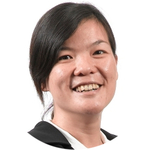Computer Vision for Atmospheric Events Analysis (CVAE)
ACPR 2019 Workshop, Auckland, New Zealand

Introduction
Pattern recognition and computer vision techniques are now extensively used in the realms of remote sensing applications. These techniques assist the remote sensing analysts to understand the various atmospheric events. With the advancement of photogrammetric techniques and imaging technologies (viz. Moderate Resolution Imaging Spectroradiometer MODIS, weather satellite images, ground-based images etc.), it is now possible to effectively analyze the various events in the earth’s atmosphere.
With the advancement of computing devices and deep learning techniques, it is now increasingly easier to analyze large amounts of heterogeneous data collected from diverse sensors. Techniques from computer vision, machine learning and statistical pattern recognition have been used in a multitude of remote sensing applications: solar energy production, local weather prediction, studying atmospheric aerosols, climate change and modelling etc.
This workshop aims to foster collaboration between pattern recognition and remote sensing experts. We intend to address challenging problems impacting our planet, and propose solutions using the quickly-evolving field of computer vision.
Call for Papers
Call for papers: We welcome submissions on the following topics, including but not limited to:
- Analysing satellite or airplane images, Moderate Resolution Imaging Spectroradiometer (MODIS) images, ground-based sky camera images etc.
- Multi-modal analysis of heterogeneous sensor data, multi-sensor fusion
- Remote sensing scene registration, segmentation, classification, analysis etc.
- 3D reconstruction
- Deep learning for remote sensing
- Dataset papers, benchmarking, evaluation metrics etc.
- Pattern recognition application areas: solar energy, renewables, photovoltaic etc.
Submission: Click here for submission
- Submitted papers should not have been published, accepted or under review elsewhere. Non-peer reviewed media, such as Arxiv do not violate the terms.
- Submissions need to follow the single-blind policy and be formatted in LNCS style, with a maximum of 14 pages (including references).
- All the papers must be submitted using the provided templates.
NOTE: Registration for workshops is included in the conference registration, i.e., all the registered ACPR participants are free to attend any of the workshops (besides all the sessions of the main conference).
Important Dates
| Paper Submission Deadline | September 14, 2019, Anywhere on Earth time (No Extension) |
| Notification to Authors | September 25, 2019 |
| Camera-Ready Deadline | October 1, 2019 |
| Workshop Date | November 26, 2019 |
Schedule
Accepted Papers
Organizers

ADAPT Centre, University College Dublin, Ireland

ADAPT Centre, Trinity College Dublin, Ireland

Trinity College Dublin, Ireland

NASA GSFC/University of Maryland, United States

Nanyang Technological University, Singapore

National University of Singapore
Technical Program Committee (TPC)
- Amal Chandran, Satellite Research Centre, Singapore
- Andrew Hines, University College Dublin, Ireland
- Avishek Nag, University College Dublin, Ireland
- Bihan Wen, Nanyang Technological University, Singapore
- Deval Mehta, Panasonic R&D Center, Singapore
- Feng Yuan, Temasek Laboratories, Singapore
- G. Lakshmi Sutha, National Institute of Technology Puducherry, India
- Hisham Cholakkal, Inception Institute of Artificial Intelligence, Abu Dhabi, United Arab Emirates
- Jing Su, Trinity College Dublin, Ireland
- John McDonald, Maynooth University, Ireland
- John Thomas, Nanyang Technological University, Singapore
- Josep Calbó, Universitat de Girona, Spain
- Kashyapa Naren Athreyas, Nanyang Technological University, Singapore
- Lucie Lévêque, Xi'an Jiaotong - Liverpool University, Suzhou, China
- Murhaf Hossari, Trinity College Dublin, Ireland
- Nikitha Radhakrishnan, Pacific Northwest National Laboratory - PNNL, Washington, United States
- Nishtha Jain, ADAPT SFI Research Centre, Dublin, Ireland
- Qingzhi Zhao, College of Geomatics, Xi'an University of Science and Technology, China
- Ravi Kumar Satzoda, Bosch Center for Artificial Intelligence (BCAI), Palo Alto, United States
- Rozenn Dahyot, Trinity College Dublin, Ireland
- Shilpa Manandhar, Nanyang Technological University, Singapore
- Subhrajit Roy, IBM Research, Australia
- Supriya Sathyanarayana, Stanford University, California, United States
- Sven Loncaric, University of Zagreb, Croatia
- Yu Song Meng, National Metrology Centre, Agency for Science, Technology and Research, Singapore
Acknowledgments
This workshop is proudly sponsored by:
Thanks to visualdialog.org and 3D Scene Generation workshop for the webpage format.
